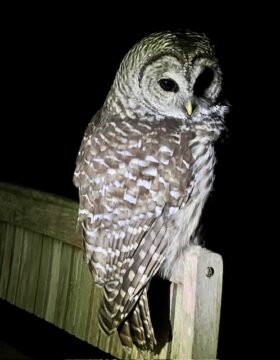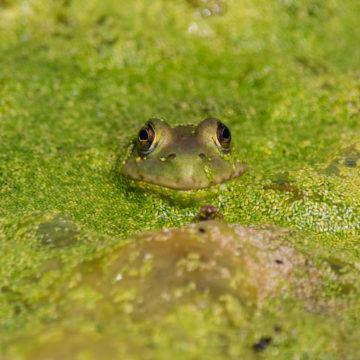by David Greer Two weeks after my wife died this past October, she briefly returned. Or so it seemed to me.
Two weeks after my wife died this past October, she briefly returned. Or so it seemed to me.
Not in the flesh, of course. Instead, I received a visit from a creature whose behavior was so unexpected, so unnerving, so uplifting, that it seemed to defy rational explanation, and I felt the presence of my wife as strongly as if she were beside me.
The visitor was a barred owl. I’m familiar with barred owls, though not with barred owls as familiars. At night, I’ve often heard from the forest the signature barred owl query, “Who cooks for you? Who cooks for you all?” Less often, I’ve been jolted awake by a bloodcurdling scream–is someone’s throat being cut?—and my heart pounds until reason clears the fog from my brain: it’s only an owl. I’ve also on occasion gone into the forest to investigate strange querulous whistles that become less strange when I spot a trio of juvenile barred owls begging a parent for food—a freshly killed fieldmouse or flycatcher—and counting on persistent whistling to do the trick.
But the owl that visited me after my wife’s death was silent. She sat outside the door, perched on the back of the garden bench on which my wife had loved to sit after walking unaided became too difficult for her. (I say ‘she’ because female barred owls are up to a third larger than males, and this was a very large owl.) There was no missing her. Barred owls are not unobtrusive. They’re smaller than a great horned owl but considerably larger than the northern spotted owl, whose habitat they have been taking over since first being observed in the Pacific Northwest in the 1970s. Their gradual spread west from their native habitat in eastern North America may have been enabled by the reforestation of parts of the prairie after the age-old indigenous practice of burning grasslands was prohibited. Read more »

